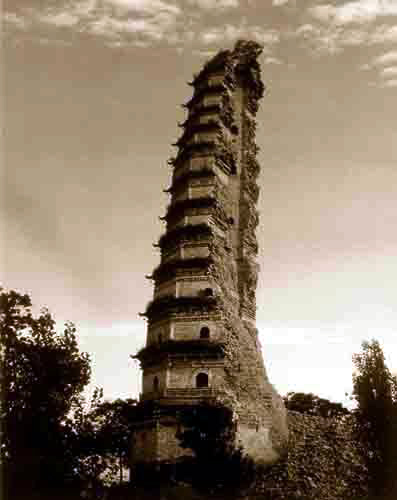

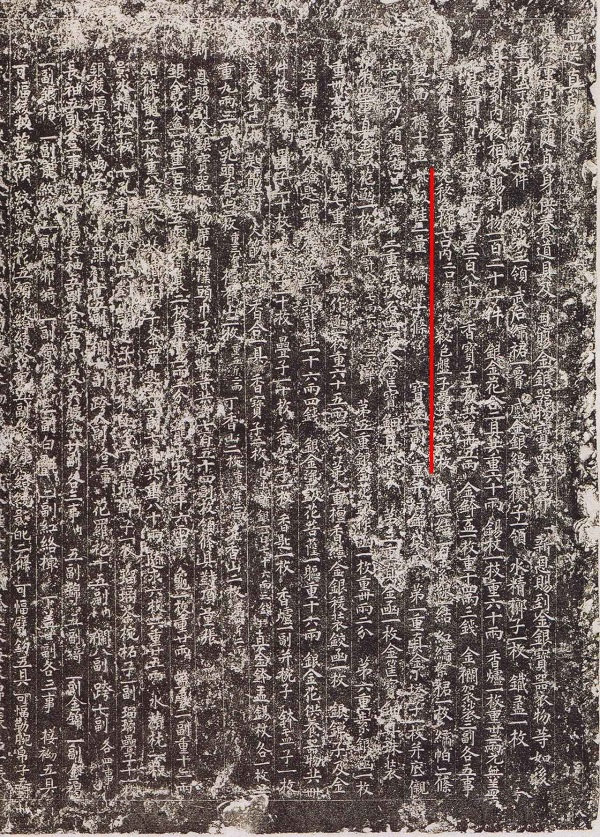
The term Mise Yue ware was likely coined around the mid or late 9th century to describe a category of top-quality Yue wares. The Tang poet Lu Guimeng (d. 881 AD) referenced this ware in his poem 秘色越器 (Mise Yueqi or Secret Color Yue Ware), describing its firing process in misty and windy autumn weather. He poetically depicted the color of the ware as "green from trees despoiled from a thousand peaks."
Bushell’s translation of the poem reads:
"The misty scenery of late autumn appears when the Yue kilns are
open,
The thousand peaks have been despoiled of their bright
color for the decoration of the bowls.
Let us take them out
at midnight to collect the falling dew,
Or fill up the cups
with wine in emulation of Ji Zhong San."
(Ji Zhong San refers to Ji Kang, one of the Seven Sages of the Bamboo
Grove.)
Another often-quoted description of mise ware comes from Xu Yin’s verses, which illustrate the ware’s distinctive color. Bushell’s translation is as follows:
"Like bright moons cunningly carved and dyed with spring water;
Like curling disks of thinnest ice, filled with green clouds;
Like ancient moss-eaten bronze mirrors lying upon the mat;
Like tender lotus leaves full of dewdrops floating on the riverside."
These poetic metaphors attempt to capture the greenish hue of mise ware, yet they do not explicitly differentiate it from standard Yue ware. Consequently, the term mise has long been a subject of discussion and speculation among Chinese ceramics scholars.
The first concrete evidence of mise ware emerged in 1987 with the discovery of 14 secret color porcelain pieces in the underground chamber of Famen Pagoda, Fufeng Prefecture, Shaanxi Province. A stone tablet listing the inventory of the chamber recorded seven mise porcelain bowls, including two with silver-banded rims and gold-gilded bird decorations (鎏金银棱平脱雀鸟团花纹), as well as six mise dishes. The inscription specifically identifies these as mise porcelains from the Tang dynasty.
 |
 |
| Famen Pagoda | Mise wares from the Famen Pagoda |
 |
|
| Rubbings from the stone tablet, record of mise wares highlighted in red | |
Most of the bowls and dishes have five-petal rims, created by ribbed lines extending down from grooves on the rim, giving them an elegant, lotus-like form. The glaze is even, translucent, and varies in shades of lake green, greyish-green, or yellowish-green.
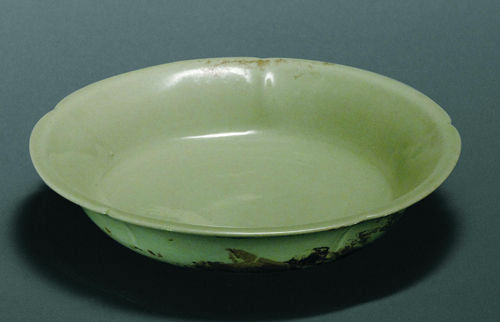 |
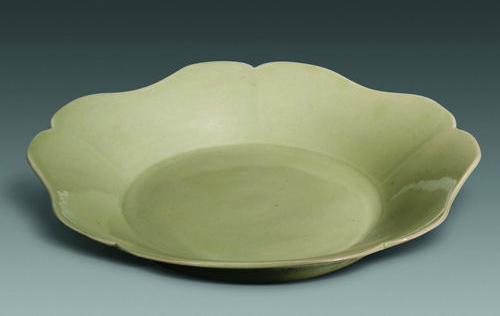 |
| Mise bowl and dish |
 |
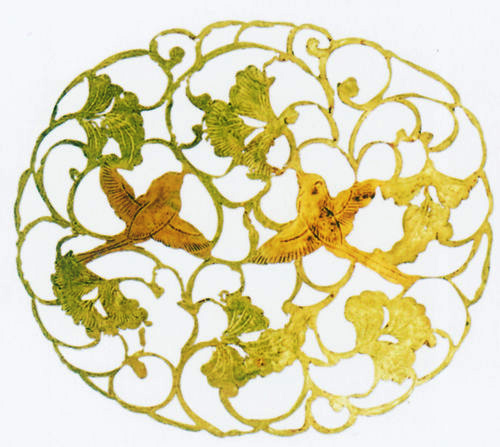 |
| Mise bowl with silver-banded rim and gold-gilded bird decoration |
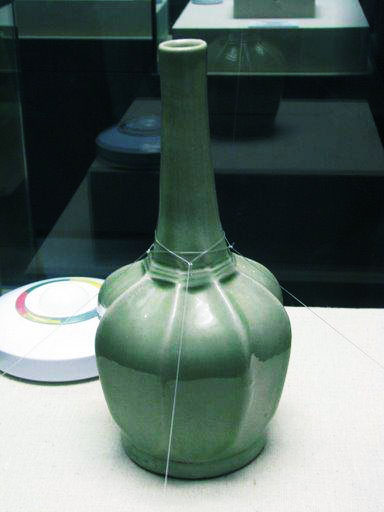 |
| Mise eight-sided vase |
Some mise bowls and dishes from the Famen Pagoda were wrapped in paper, with remnants imprinted with the image of a lady still visible on certain pieces.
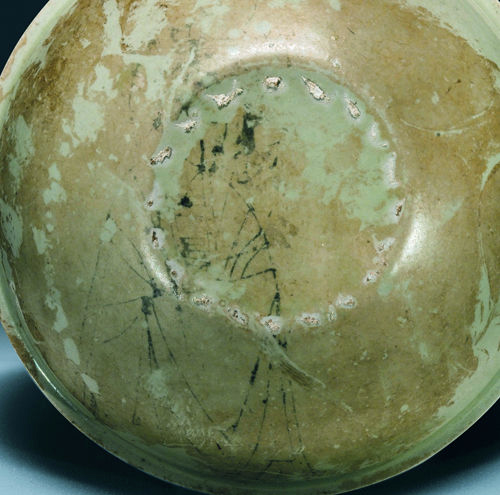 |
| Example with remnant traces of paper and imprint of a lady |
Mise, or secret color porcelains, were first produced for the Tang court during the late Tang period. This dating is further supported by the 2016–2017 excavation of the Hou Si Ao kiln in Shanglin Lake, which confirmed it as a major production site for mise porcelain.
During the Five Dynasties period, Zhejiang was under the rule of the Wuyue Kingdom. Under Wuyue control, the Yue kilns produced large quantities of mise porcelains, which were sent as tribute to the powerful northern states and later to the Northern Song court.
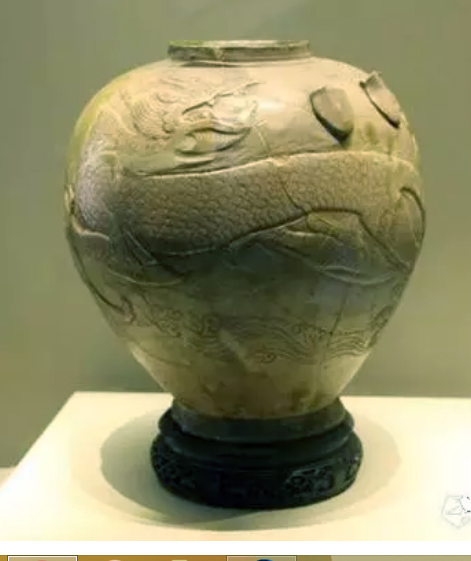 |
| Mise dragon jar from the tomb of Qian Yuan Guan |
 |
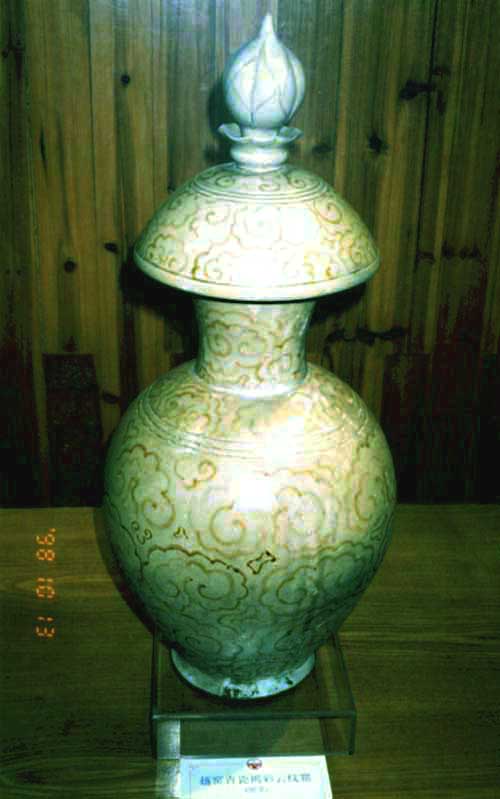 |
| Mise wares with iron-brown decoration from the tomb of Shui Qiu |
 |
 |
 |
 |
 |
| Group of Mise wares from the tomb of Qian Liu |
 |
| Example of Mise dish with incised twin butterflies from the tomb of a Liao nobility |
In October 2016–January 2017, Zhejiang archaeologists conducted an excavation at the Hou Si Ao kiln site (后司岙窑址) in Shanglin Lake, confirming it as the primary production center for mise porcelain. The excavation revealed a vast kiln complex covering about 1,100 square meters, with heaps of kiln rejects exceeding five meters in depth.
 |
 |
 |
 |
| Hou Si Ao kiln site and the kiln rejects |
Hou Si Ao kiln began producing mise wares in the late Tang period and ceased operations by the end of the Five Dynasties. Kiln furniture with reign marks of Da Zhong (846–859 AD), Xian Tong (860–874 AD), and Zhong He (881–885 AD) suggests that production had already commenced by the Da Zhong period. By the Xian Tong period, production expanded, peaking during the Zhong He era. However, quality declined by the mid-Five Dynasties period.
A wide variety of mise vessels were produced, including:
The paste was fine-grained, and the glaze was relatively thick, exhibiting an icy jade-like appearance. Most Tang-era vessels were plain, as decoration was believed to diminish their aesthetic appeal.
 |
| Flat shape vase with 4 lugs |
 |
 |
| Pillow and porcelaneous support with marks of clay lumps used as separator during firing |
 |
| Bowl and disc shape porcelaneous support |
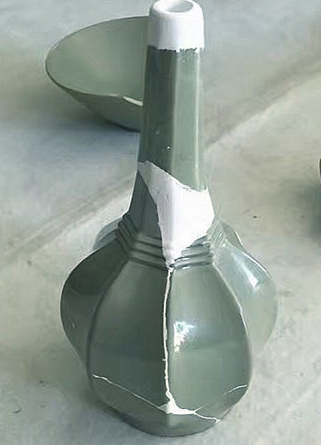 |
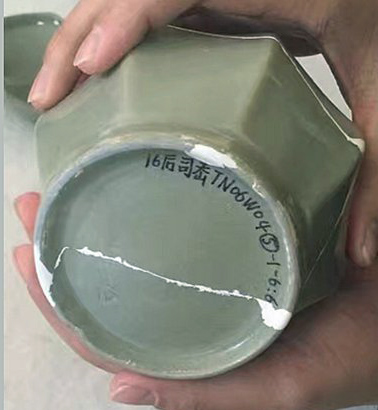 |
| 8 sided vase similar to that found in the the Famen temple. So far, Hou Si Ao kiln is the only site known to produce such vessel |
 |
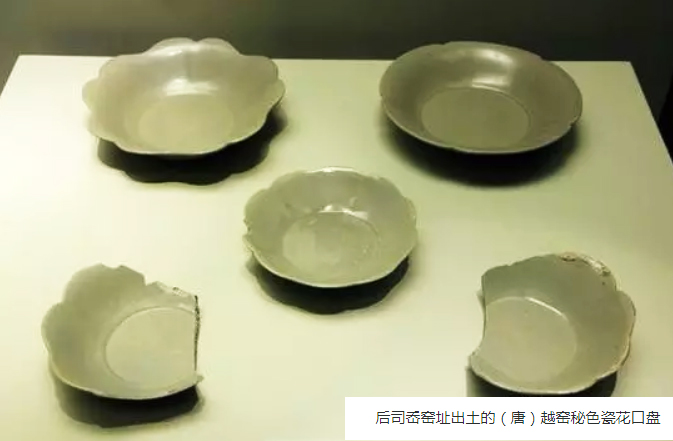 |
| Tang Mise dishes from Hou Si Ao site |
 |
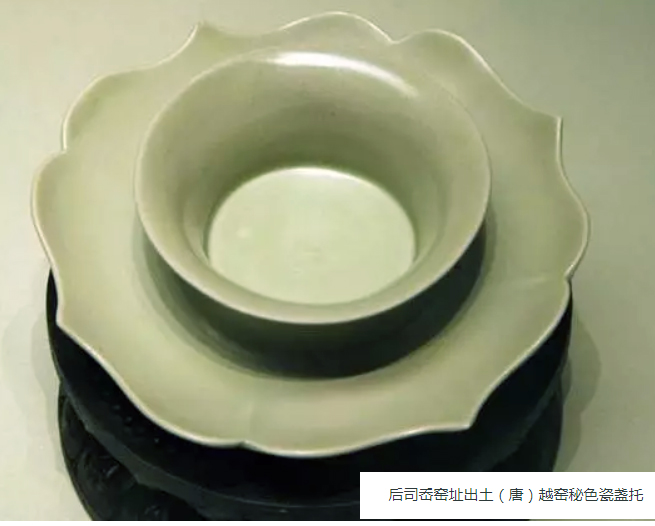 |
| Two restored Tang Mise vessels from Hou Si Ao site |
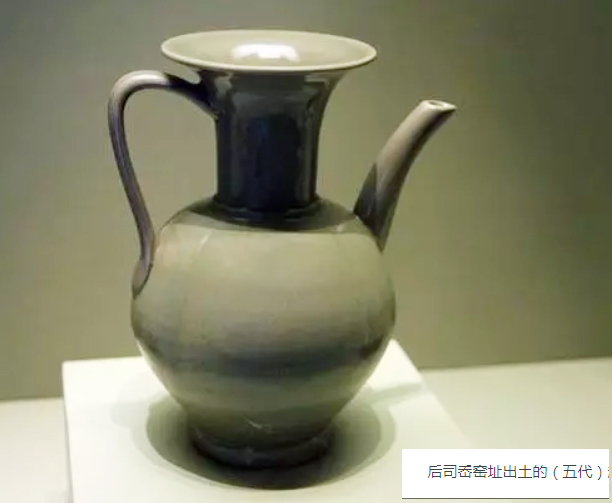 |
| Restored 5 Dynasties Mise ewer from Hou Si Ao site |
A key factor in the superior quality of mise Yue ware was the unique saggar used during firing. Unlike ordinary saggars, those used for mise ware were made from the same porcelain material as the vessels themselves. The saggars were fully sealed with glaze at the edges, ensuring a highly effective reduction-firing process that produced the prized greenish glaze.
This method was costly, as each saggar had to be broken after firing to retrieve the vessel, making it a one-time-use item. Porcelain saggars first appeared in the Da Zhong period but remained rare. By the Zhong He period, their use became predominant, but as quality declined in the mid-Five Dynasties, the saggars became coarser, affecting the final product.
 |
|
| Mise fragments and saggars | |
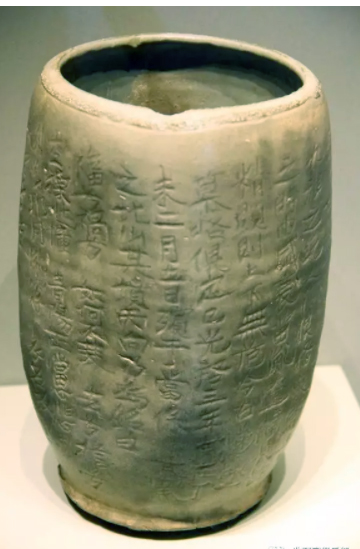 |
|
| Jar with the inscription which stated that on the 5th year of Tang Zhonghe reign (885 A.D.), the deceased passed away and in 887 this person was buried in the Northern Hill of the tribute kiln. | |
 |
|
| Saggar fragment with "官" (Guan) character | |
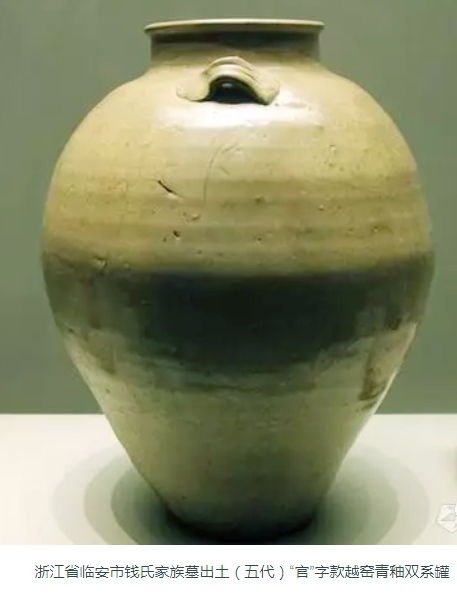 |
|
| Porcelain jar with "官" character from Qian clan tomb |
The excavation of Hou Si Ao kiln has significantly advanced the study of Mise Yue ware. It clarified the production timeline, technological advancements, and the quality decline over time. The vast number of unearthed mise shards and vessels provide a reliable reference for determining whether a Yue ware piece qualifies as mise.
For more details, refer to:
Written by: NK Koh (30 Nov 2017), updated: 7 Mar 2025